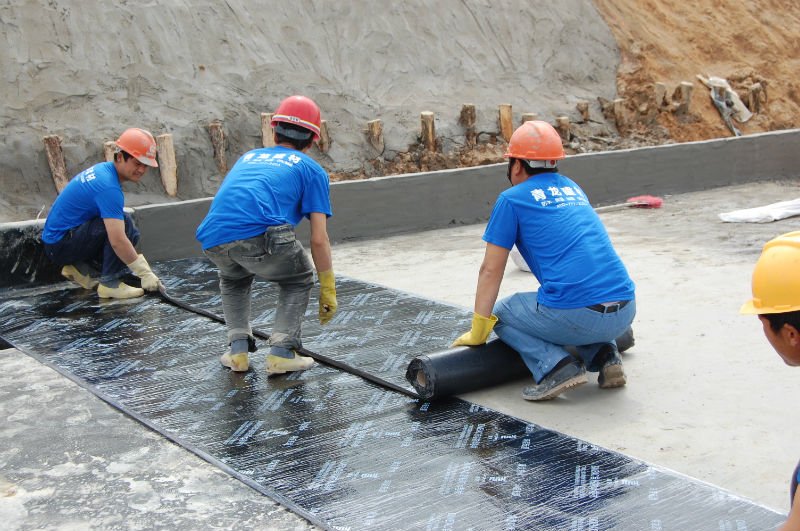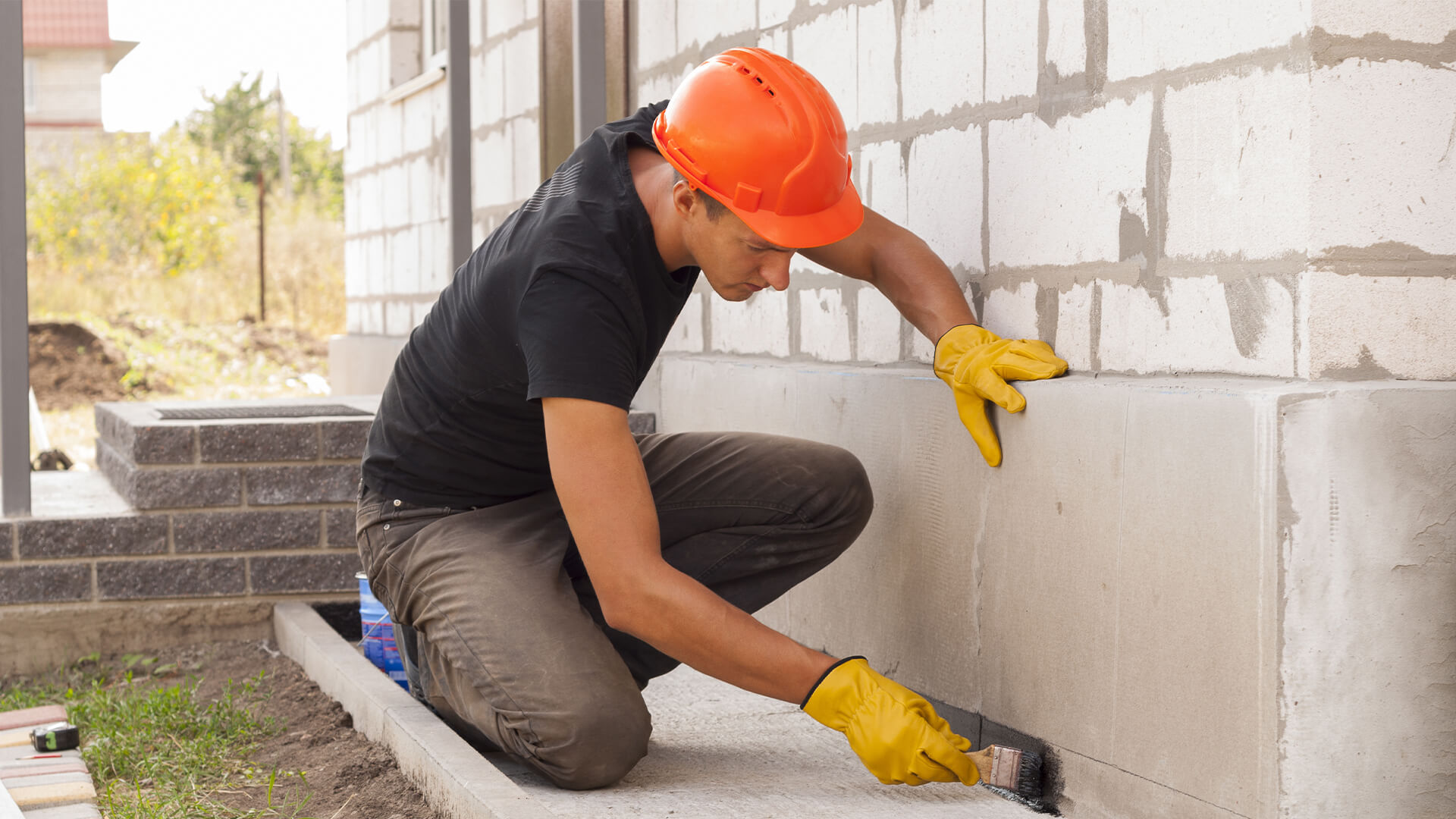Kinds of Waterproofing: Exploring the Numerous Methods and Their Applications
Waterproofing is a crucial element of building and construction and upkeep. It secures structures from the destructive effects of water damage. There are a number of methods readily available, each with its special applications and advantages. From membrane layer systems to cementitious options, understanding these choices is essential for efficient implementation. The selection of waterproofing technique can significantly impact durability and longevity. Exploring these different methods discloses their distinctive advantages and potential difficulties, triggering more factor to consider of suitable options.
Membrane Waterproofing Equipments
Membrane waterproofing systems serve as a crucial obstacle against water breach in numerous frameworks. These systems commonly contain slim sheets made from materials like rubber, thermoplastic, or asphalt, which are related to surfaces to stop dampness penetration. They can be installed over or listed below grade and are particularly reliable in areas vulnerable to high water exposure, such as cellars, roofing systems, and foundations.The installment process entails cleansing the substratum, using adhesives or primers, and specifically fitting the membrane to ensure complete coverage. Membrane systems can be either totally stuck, mechanically connected, or laid loose, depending on the certain requirements of the project. They offer sturdiness and adaptability, fitting structural movements without jeopardizing their waterproofing capabilities. These systems can be enhanced with extra layers for improved security. Eventually, membrane layer waterproofing systems are vital for guarding structures against water damages and preserving long-term stability.
Liquid-Applied Waterproofing Coatings
Liquid-applied waterproofing layers offer a flexible option for protecting surfaces from water seepage - Drainage & waterproofing company Omaha. These coverings contain fluid materials that, when applied, develop a seamless, versatile membrane layer. Their adaptability permits application on numerous substratums, consisting of concrete, metal, and wood. The layers can be utilized in varied atmospheres, from property to commercial settings, making them suitable for roofs, structures, and below-grade structures.One substantial benefit of liquid-applied coverings is their ability to satisfy uneven forms and permeate cracks, producing a robust obstacle against wetness. They often show outstanding attachment residential or commercial properties and resistance to UV radiation, making certain durability and resilience. In addition, the application procedure is commonly simple, enabling quick setup and lowered labor costs. This technique additionally decreases the danger of water merging, as the continual layer efficiently routes water away from at risk areas. Overall, liquid-applied waterproofing coverings are an effective choice for complete water security
Cementitious Waterproofing Solutions

Cementitious waterproofing solutions provide a durable option for structures calling for reputable wetness security. These systems mostly utilize a mix of cement, sand, and chemical ingredients to develop Your Domain Name a water-proof obstacle. They are commonly related to surface areas such as concrete wall surfaces, foundations, and floorings, supplying a durable, resilient protection against water intrusion.One of the key benefits of cementitious waterproofing is its convenience of application; it can be used making use of a brush, roller, or spray, making it suitable for various task dimensions. In addition, this technique works with many surface areas and can frequently be made use of combined with various other waterproofing techniques.Cementitious solutions are especially efficient in atmospheres where water exposure is a worry, such as basements or below-grade frameworks. Their outstanding attachment residential or commercial properties ensure that they bond well with substratums, offering a solid and nonporous layer against dampness infiltration.
Bentonite Waterproofing
Bentonite waterproofing is a highly effective technique that utilizes salt bentonite clay to develop a natural barrier against water. This strategy exploits the special residential or commercial properties of bentonite, which increases upon call with water, sealing any type of prospective leakages and preventing dampness infiltration. It is commonly made use of in various applications, including structure wall surfaces, passages, and maintaining wall surfaces, where water resistance is essential.Bentonite can be applied in several kinds, such as panels or blankets, giving flexibility in installation. Its ability to self-seal makes it an eye-catching option for locations based on shifting dirt or rising and falling water levels. In addition, bentonite waterproofing is ecologically pleasant, as it is a natural product that does not present damaging chemicals right into the environments.
Water Drainage and Outside Waterproofing Equipments
Effective waterproofing usually includes a combination of methods, consisting you can find out more of water drainage and external systems. Water drainage systems, such as French drains pipes and sump pumps, are made to redirect water away from structures, minimizing hydrostatic stress versus foundations. These systems are vital in avoiding water accumulation that can bring about structural damages and mold and mildew growth.External waterproofing, on the other hand, entails using safety barriers to the building's outside. Techniques such as the setup of water resistant membranes, layers, or sealers can aid protect against water infiltration. This method not only shields the foundation however also boosts the overall resilience of the structure.Together, drainage and exterior waterproofing systems create a comprehensive service to take care of water successfully. By executing these techniques, homeowner can protect their investments against the harmful ccw waterproofing effects of moisture, ensuring lasting security and safety for their structures.
Often Asked Questions
How Do I Select the Right Waterproofing Technique for My Project?
Selecting the appropriate waterproofing method relies on variables such as job type, ecological conditions, spending plan, and preferred longevity. Evaluating these elements enables educated decisions customized to details demands and needs.

Can Waterproofing Be Applied in Cold Climate Conditions?
Waterproofing can be used in winter problems, however it requires particular products and strategies. Cold temperature levels might influence treating times and adhesion, requiring cautious option of products created for low-temperature application.
What Are the Usual Indicators of Waterproofing Failure?
Usual indicators of waterproofing failing include noticeable water stains, peeling off paint, moist odors, mold and mildew growth, and cracks in wall surfaces or structures. Sump pump discharge drainage Omaha. These indications suggest that moisture is penetrating the barrier, endangering its performance
The Length Of Time Does Waterproofing Last Before Requiring Maintenance?
The durability of waterproofing varies, typically lasting between 5 to 10 years. Aspects such as material high quality, environmental problems, and upkeep techniques influence its resilience, demanding routine assessments to ensure effective defense against water breach.
Exist Eco-Friendly Waterproofing Options Available?
The question of environment-friendly waterproofing choices discloses a growing rate of interest in sustainable products (Water Solutions). Different natural compounds, such as plant-based sealers and recycled items, offer efficient solutions while reducing ecological effect, attracting environmentally aware customers